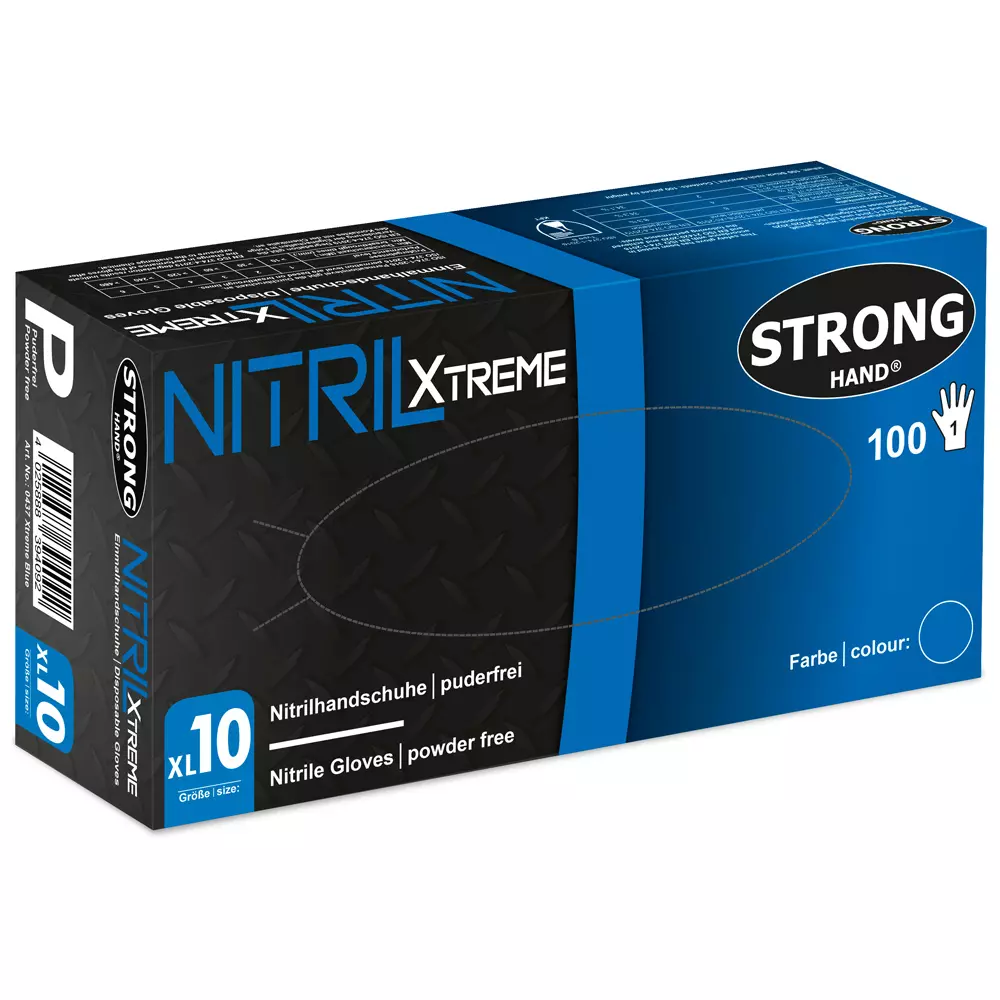
Product description
Norm: En 21420, En 374, Kat III Material: Nitrile, Powderfree, Blue thickness: Approx. 0,09 mm lenght: Approx. 24 Cm Sizes: 7 (S), 8 (M), 9 (L), 10 (Xl) Aql: 1,5
• Sutitable For Food Industry
• Heavy Version For Max. Safety
About Disposable Nitrile Gloves
Disposable Nitrile Gloves provide latex-free hand protection with superior chemical and puncture resistance. These single-use gloves offer excellent tactile sensitivity and a secure fit, making them ideal for healthcare, food service, cleaning, and industrial applications where hygiene and safety are essential.
- Chemical Resistance
- Slip Resistant
- Antimicrobial Protection
- Hand Protection
Standards and labels
Feldtmann delivery terms
Free delivery for all Feldtmann products
Stronghand
XTREME BLUE Nitrile Disposable Gloves, 10 x 100 pcs
XTREME BLUE Nitrile Disposable Gloves, 10 x 100 pcs
5 / 5
54,87 €
Price per 10 packages (1 000 pcs)
5,49 € / 100 pcs
Free delivery